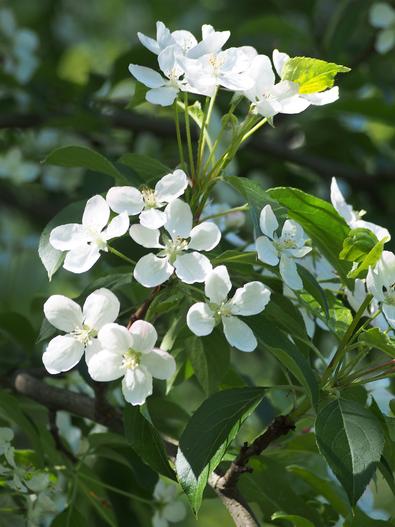Weeping Crabapple
(Malus ×scheideckeri)
Weeping Crabapple (Malus ×scheideckeri)
/
/

Agnieszka Kwiecień, Nova
CC BY-SA 4.0
Image By:
Agnieszka Kwiecień, Nova
Recorded By:
Copyright:
CC BY-SA 4.0
Copyright Notice:
Photo by: Agnieszka Kwiecień, Nova | License Type: CC BY-SA 4.0 | License URL: https://creativecommons.org/licenses/by-sa/4.0 | Uploader: Nova | Publisher: Wikipedia Commons




Estimated Native Range
Summary
Malus ×scheideckeri, commonly known as Weeping Crabapple, is a deciduous small tree or large shrub native to temperate regions of Northern and Central China and Korea. It typically grows to a height of 25-35 feet (8-11 meters) and a width of 12-15 feet (3.7-4.6 meters), with a distinctive weeping form that adds visual interest to the landscape. The Weeping Crabapple is celebrated for its cascading branches and the profusion of pink and white blossoms that appear in spring, creating a showy floral display that is highly attractive to pollinators. Following flowering, small, ornamental crabapples may develop, which can persist into winter and provide food for birds.
The Weeping Crabapple is valued for its graceful habit and springtime flowers, making it a popular choice for ornamental plantings in residential gardens, parks, and as a focal point in landscape designs. It thrives in full sun, requiring medium amounts of water and well-drained soil to perform best. While it is generally easy to maintain, it can be susceptible to common apple diseases such as fire blight and apple scab. Pruning may be necessary to maintain its weeping shape and to remove any diseased or damaged wood. Despite these potential issues, its aesthetic appeal and wildlife benefits make it a worthwhile addition to many gardens.CC BY-SA 4.0
The Weeping Crabapple is valued for its graceful habit and springtime flowers, making it a popular choice for ornamental plantings in residential gardens, parks, and as a focal point in landscape designs. It thrives in full sun, requiring medium amounts of water and well-drained soil to perform best. While it is generally easy to maintain, it can be susceptible to common apple diseases such as fire blight and apple scab. Pruning may be necessary to maintain its weeping shape and to remove any diseased or damaged wood. Despite these potential issues, its aesthetic appeal and wildlife benefits make it a worthwhile addition to many gardens.CC BY-SA 4.0
Plant Description
- Plant Type: Tree
- Height: 25-35 feet
- Width: 12-15 feet
- Growth Rate: Moderate
- Flower Color: Pink, White
- Flowering Season: Spring
- Leaf Retention: Deciduous
Growth Requirements
- Sun: Full Sun
- Water: Medium
- Drainage: Medium
Common Uses
Bee Garden, Bird Garden, Butterfly Garden, Edible*Disclaimer: Easyscape's listed plant edibility is for informational use. Always verify the safety and proper identification of any plant before consumption., Fragrant, Low Maintenance, Showy Flowers
Natural Habitat
Temperate regions of Northern and Central China and Korea
Other Names
Common Names: Red Jade, Crabapple
Scientific Names: , Malus ×scheideckeri, Pyrus pulcherrima var. scheideckeri, Pyrus ×scheideckeri, Pyrus floribunda var. scheideckeri,
GBIF Accepted Name: Malus ×scheideckeri (Späth) Zabel